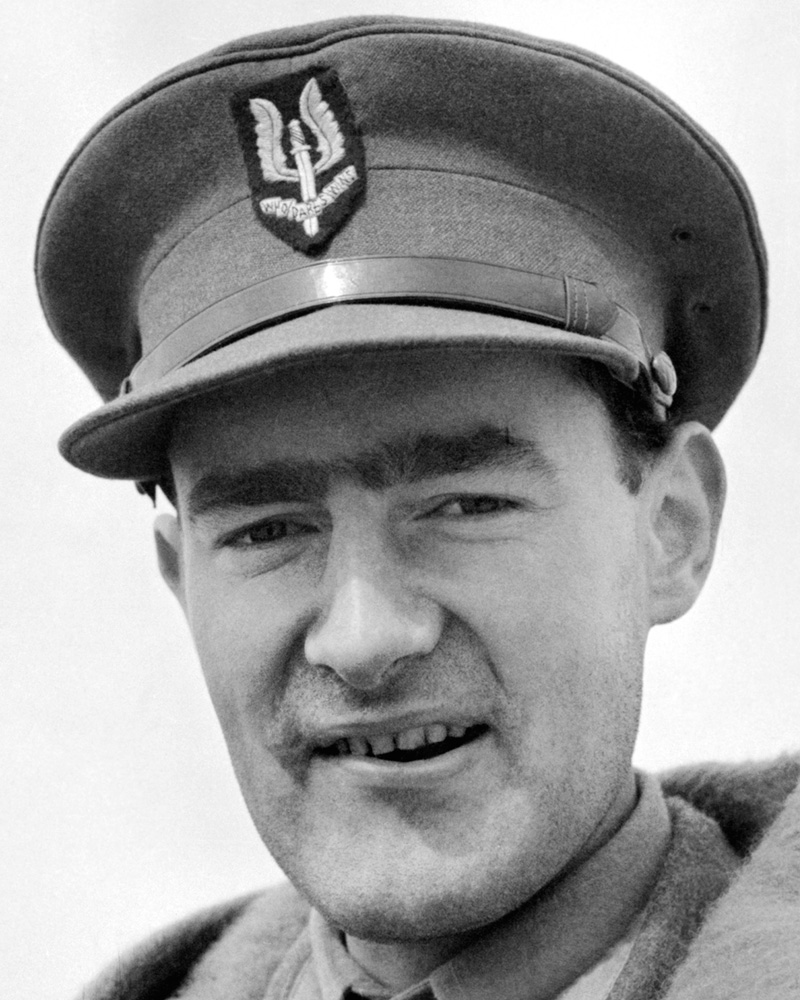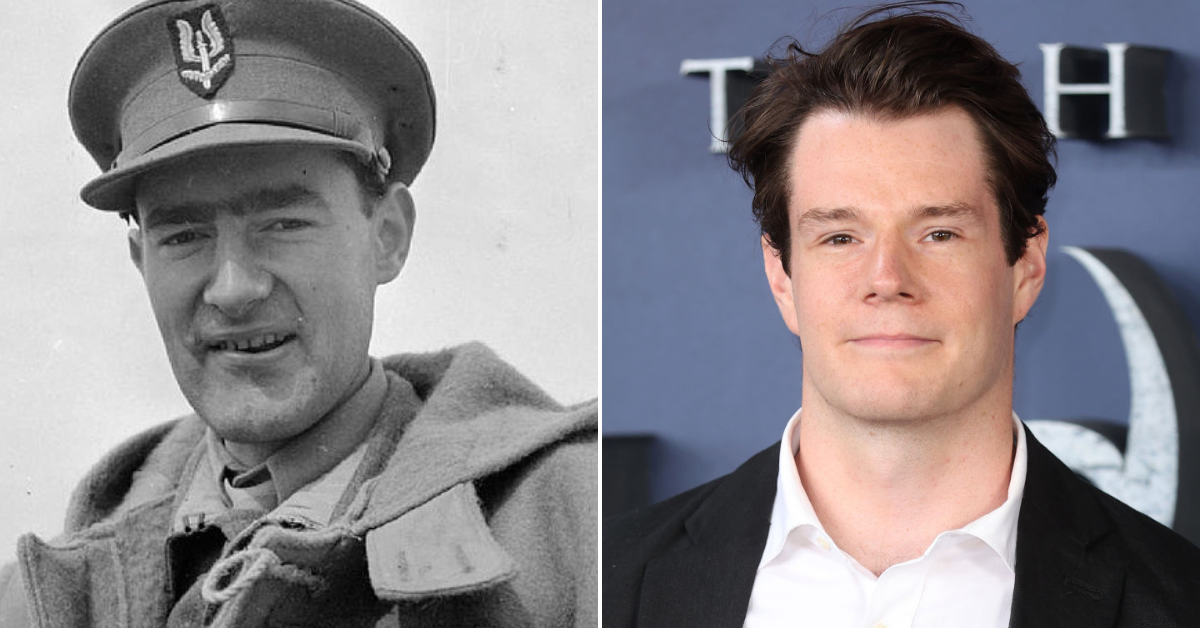Captain David Stirling: The Visionary Behind Modern Special Forces
Have you ever wondered about the true essence of leadership, especially when the chips are down? Well, to be honest, when we talk about a "captain," we often picture someone in charge, a person leading the way, perhaps a commander of a military unit or a ship. But, you know, some individuals really take that idea and just stretch it, making it mean something completely new. This is exactly what Captain David Stirling did, a figure whose name is pretty much synonymous with courage and out-of-the-box thinking.
He was, in a way, someone who redefined what it meant to be a military leader, a commander of troops. His actions and ideas during World War II, actually, reshaped how nations thought about small, highly skilled teams operating behind enemy lines. He was the kind of person who didn't just accept the established ways; he challenged them, creating something entirely new and incredibly effective.
So, today, we're going to explore the life and incredible impact of Captain David Stirling, a man who, quite literally, wrote the book on modern special operations. His story is a really compelling look at how one person's vision can change the course of history, even in the most difficult times.
Table of Contents
- Biography of Captain David Stirling
- Early Life and Background
- The Birth of the SAS
- Wartime Exploits and Innovation
- Capture and Post-War Life
- Enduring Legacy and Influence
- Frequently Asked Questions About Captain David Stirling
Biography of Captain David Stirling
Captain David Stirling, often called the "Father of the SAS," was a truly remarkable figure whose influence reaches far beyond the battlefields of World War II. He was, in essence, a man who saw a different way to fight, a way that was, you know, more agile and surprising than traditional warfare. His ideas, while initially met with some skepticism, really did prove to be incredibly effective.
His story is one of bold vision, persistence, and an almost uncanny ability to get things done, even against considerable odds. He was someone who, frankly, understood that sometimes the biggest impact comes from the smallest, most specialized units. It's almost like he instinctively knew how to make a few people achieve what many could not.
Personal Details and Bio Data of Captain David Stirling
| Detail | Information |
|---|---|
| Full Name | Archibald David Stirling |
| Born | 15 November 1915 |
| Birthplace | Lecropt, Perthshire, Scotland |
| Died | 4 November 1990 (aged 74) |
| Nationality | British |
| Allegiance | United Kingdom |
| Service/Branch | British Army |
| Years of Service | 1937–1947 |
| Rank | Lieutenant Colonel (Wartime Substantive Captain) |
| Unit | Scots Guards, No. 8 Commando, Special Air Service (SAS) |
| Awards | Officer of the Order of the British Empire (OBE), Distinguished Service Order (DSO) |
| Known For | Founding the Special Air Service (SAS) |
Early Life and Background
David Stirling came from a rather distinguished Scottish family, which, you know, probably gave him a certain kind of upbringing. He was educated at Ampleforth College and Trinity College, Cambridge, though he didn't actually finish his degree there. Before the war, he was, apparently, a bit of an adventurer, even training to climb Mount Everest, which, you know, tells you a lot about his spirit.
When World War II broke out, he joined the Scots Guards, which was a pretty standard path for someone of his background. But, you know, even then, he seemed to have a restless energy, a sense that traditional methods might not be enough for the kind of conflict they were facing. He soon volunteered for the newly formed No. 8 Commando, where he began to see the potential for small, specialized units.
It was during his time with the commandos, while recovering from a parachuting accident, that he really started to think differently. He was, in a way, seeing the bigger picture, realizing that larger-scale raids were often too slow and too easily detected. He started to formulate a radical idea, a concept that would, in time, become the Special Air Service.
The Birth of the SAS
The idea for the SAS came to Captain David Stirling in 1941, during the North African campaign. He was, honestly, quite frustrated with the conventional approach to warfare, especially the slow, grinding nature of desert combat. He believed that small, highly trained groups of soldiers could cause far more disruption by operating secretly behind enemy lines, targeting vital supply depots, airfields, and communication hubs. It was a pretty bold thought, actually.
He even, you know, famously sneaked into General Auchinleck's headquarters to present his proposal. He was, apparently, quite persuasive, arguing that a small, mobile force could inflict disproportionate damage with minimal resources. His vision was, essentially, to create a unit that could strike quickly and disappear, leaving the enemy confused and demoralized.
Initially called "L Detachment, Special Air Service Brigade" as a deception, the unit was, more or less, a collection of daring volunteers. Stirling's concept was truly groundbreaking for its time, emphasizing surprise, speed, and self-reliance. He was, in a way, building a new kind of military force, one that relied on ingenuity as much as firepower. Learn more about special operations history on our site.
Wartime Exploits and Innovation
The early operations of Captain David Stirling's SAS were, to put it mildly, incredibly daring. They would parachute into the desert or be dropped off by the Long Range Desert Group (LRDG), then move silently to their targets. Their primary goal was to destroy enemy aircraft on the ground, disrupting the Axis air superiority. These missions were, you know, often fraught with extreme danger and required incredible resilience.
Stirling himself led many of these early raids, showing a real knack for leadership and tactical planning. He was, in some respects, a master of unconventional warfare, understanding that precision strikes could have a much bigger impact than large-scale battles. The SAS, under his command, destroyed hundreds of Axis aircraft, fuel dumps, and supply convoys, causing significant headaches for the enemy.
His methods were, apparently, very innovative. He pioneered techniques for desert navigation, demolition, and small-unit tactics that are still studied today. He was, really, a true pioneer, constantly refining his approach based on experience. His focus on rigorous training and the selection of highly independent individuals was, arguably, what made the SAS so uniquely effective. You can find more details about these operations here.
Capture and Post-War Life
Captain David Stirling's incredible run of success eventually came to an end in January 1943, when he was, sadly, captured by the Germans in Tunisia. He spent the rest of the war as a prisoner, attempting several escapes from various POW camps, including Colditz Castle. His spirit, it seems, remained unbroken even in captivity, which is, you know, pretty inspiring.
After the war, Stirling continued to be a significant figure, though his focus shifted somewhat. He remained involved in military and security matters, advising on special forces operations and, in some respects, even becoming involved in efforts to counter Soviet influence in the Middle East. He was, you know, always thinking about how to protect British interests and foster stability.
He also, quite interestingly, became involved in various business ventures and even founded the Great British Picket, a sort of trade union for managers and professionals, in the 1970s. This shows, I think, his continued desire to organize and lead, even outside of a military context. He was, basically, a man who just kept finding ways to contribute.
Enduring Legacy and Influence
The legacy of Captain David Stirling is, without a doubt, immense and far-reaching. He is, quite rightly, credited with founding the Special Air Service, a unit that has become one of the world's most elite and respected special forces organizations. His original vision for small, highly trained, and adaptable units operating behind enemy lines has, truly, become a cornerstone of modern military strategy.
Even today, in 2024, the principles he established – speed, surprise, and violent action – are still at the core of special operations worldwide. His emphasis on individual initiative, rigorous selection, and constant innovation continues to shape how special forces are trained and deployed. He was, in a way, a prophet of modern warfare, seeing capabilities that others couldn't.
His story serves as a powerful reminder that, sometimes, the most significant changes come from those who dare to challenge the status quo and pursue seemingly impossible ideas. Captain David Stirling was, honestly, a true visionary, and his contributions to military thought and practice are, more or less, still felt across the globe. He really did leave an indelible mark on history.
Frequently Asked Questions About Captain David Stirling
Who was David Stirling and what is he known for?
David Stirling was a British Army officer during World War II, known primarily for founding the Special Air Service (SAS). He was, you know, a pioneer of modern special operations, advocating for small, highly trained units to conduct raids behind enemy lines. He was, basically, a military leader who really pushed the boundaries of what was considered possible in warfare.
How was the SAS formed?
The SAS was formed in 1941 by Captain David Stirling during the North African campaign. He proposed the idea of a small, highly mobile unit to conduct sabotage and reconnaissance missions deep within enemy territory. He, you know, managed to convince senior commanders of his radical idea, and the unit was initially formed as "L Detachment, Special Air Service Brigade" as a deception measure.
What was Captain David Stirling's impact on military strategy?
Captain David Stirling's impact on military strategy was, arguably, profound. He introduced and proved the effectiveness of unconventional warfare tactics, emphasizing precision strikes by small, elite teams over large-scale engagements. His methods, which prioritized surprise, speed, and self-reliance, laid the groundwork for how special forces operate globally today. He was, in a way, a true innovator in military thinking.

David Stirling: The Phantom Major | National Army Museum

The Real-Life Men Behind the Characters of 'SAS: Rogue Heroes' | War History Online
_in_North_Africa_during_the_Second_World_War_E21340.jpg)
Category:David Stirling (military) - Wikimedia Commons